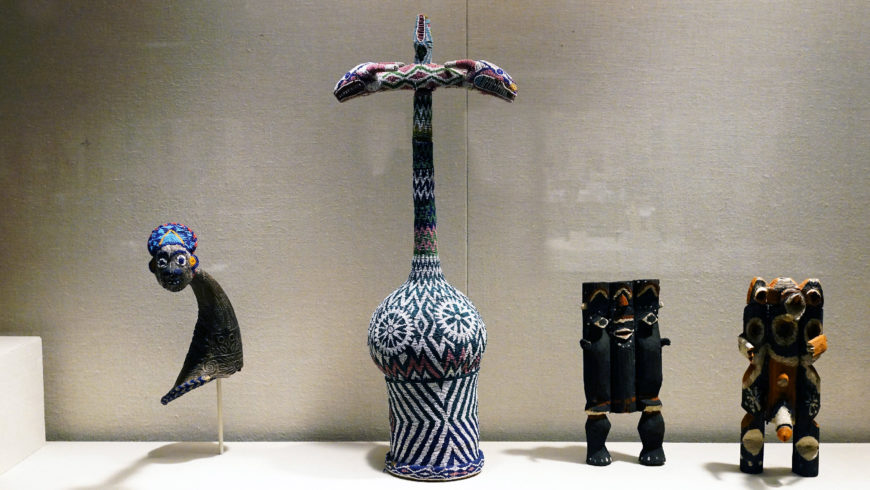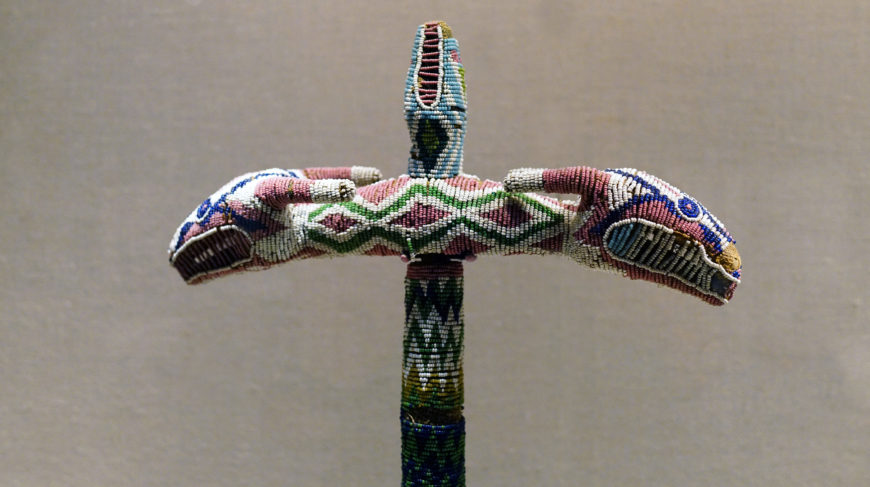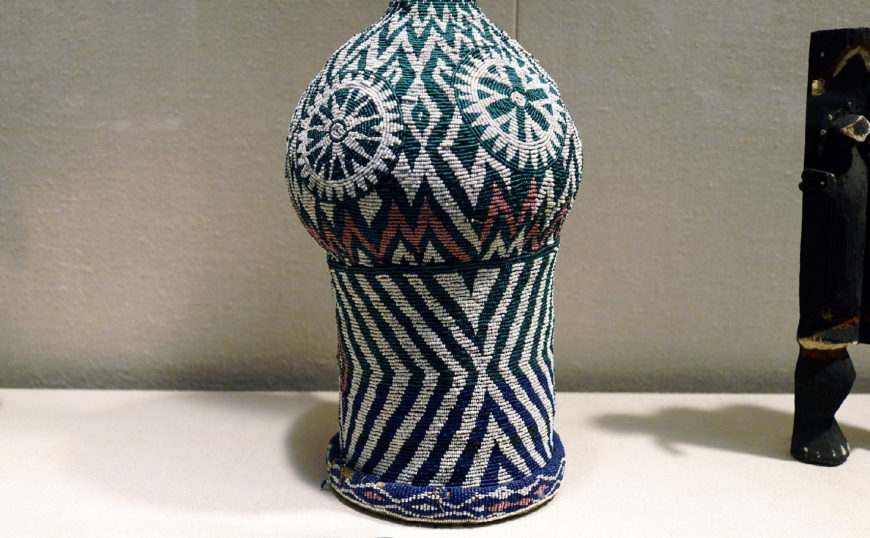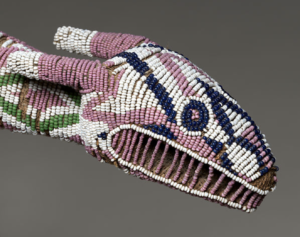
Ceremonial Palm Wine Vessel, 19th–20th century (Grassfields region, Cameroon), gourd, glass beads, cloth, cane, wood, 76.2 x 30.8 x 19.7 cm (The Metropolitan Museum of Art, New York; photo: Steven Zucker, CC BY-NC-SA 2.0)
Of the many ritual items in a Grassfields kingdom’s royal treasury, bead-embroidered calabashes are among the most important. These containers were used exclusively by the Fon (chief) to store palm wine served on ceremonial occasions. The ritual consumption of palm wine was considered a sacred activity and reinforced the Fon’s spiritual and political power. Palm wine was also an essential component of sacrificial libations to the ancestors.

Animal heads (detail), Ceremonial Palm Wine Vessel, 19th–20th century (Grassfields region, Cameroon), gourd, glass beads, cloth, cane, wood, 76.2 x 30.8 x 19.7 cm (The Metropolitan Museum of Art, New York; photo: Steven Zucker, CC BY-NC-SA 2.0)
This example features a long-necked calabash attached to a tall cylindrical basketry base. The carved wood stopper has two-horned animal heads facing opposing directions and a third animal head pointing upward, symbols of all-seeing powers. The entire assemblage is covered with cloth embroidered with strands of translucent and opaque glass beads that form intricate and colorful circular, diamond-shaped, and zigzag patterns.
These abstract geometric motifs symbolize attributes of royal power. The circular medallions surrounding the spherical body refer to the earth spider, a symbol of supernatural wisdom and communication. Because this type of spider burrows in the earth, it is believed to have the ability to unite humans, who live above the ground, with the ancestors who are buried below. Diamond-shaped motifs on the stopper and on the sides and bottom rim of the stand represent the frog, a symbol of fertility and increase. Their presence on the container conveys the idea that, with the support of many people, a peaceful and prosperous kingdom is possible.

Bottom (detail), Ceremonial Palm Wine Vessel, 19th–20th century (Grassfields region, Cameroon), gourd, glass beads, cloth, cane, wood, 76.2 x 30.8 x 19.7 cm (The Metropolitan Museum of Art, New York; photo: Steven Zucker, CC BY-NC-SA 2.0)
Rulers throughout the many kingdoms in the Grassfields region of western Cameroon employed a range of art objects to assert their political, economic, and religious power. Presented publicly in lavish displays of wealth and power, many court objects were distinguished by their elaborate bead embroidery. Imported from Europe, beads were considered a luxury material whose use and distribution were controlled by the Fon. The decoration of wooden sculpture with vast quantities of brilliantly colored beads transformed utilitarian objects, such as stools, vessels, and pipes, into symbols of royal status and prestige.

Animal head (detail), Ceremonial Palm Wine Vessel, 19th–20th century (Grassfields region, Cameroon), gourd, glass beads, cloth, cane, wood, 76.2 x 30.8 x 19.7 cm (The Metropolitan Museum of Art, New York)
Additional resources
This work at The Metropolitan Museum of Art, New York
Trade Relations among European and African Nations
Smarthistory images for teaching and learning:
[flickr_tags user_id=”82032880@N00″ tags=”palmwine,”]

